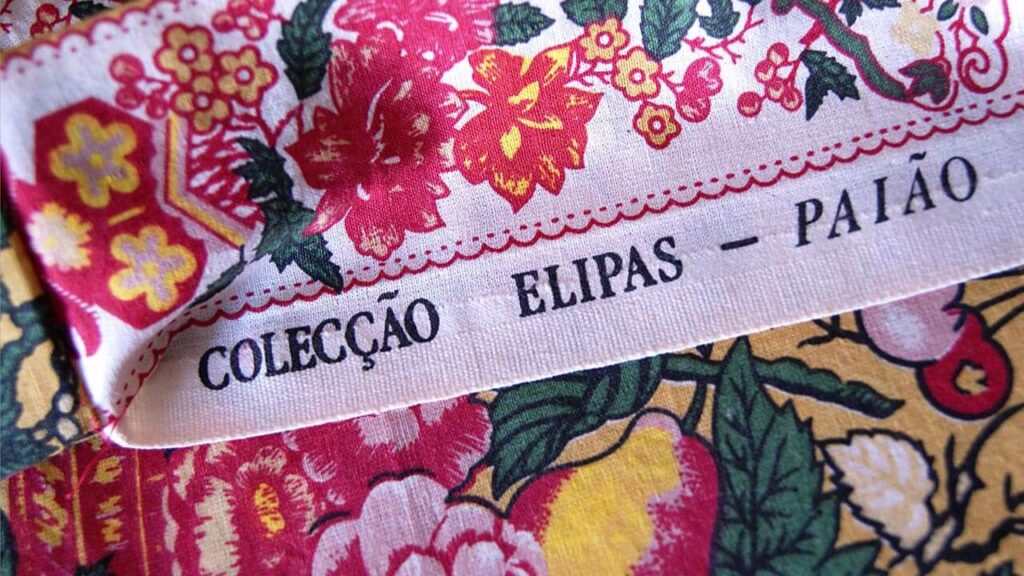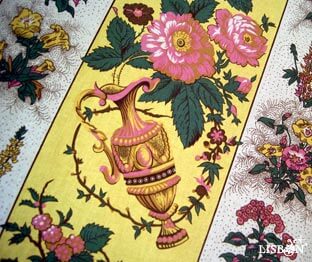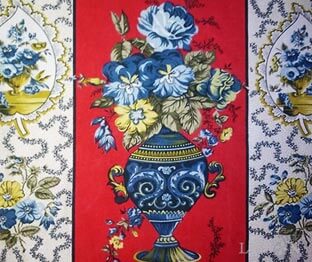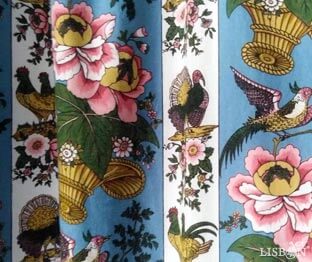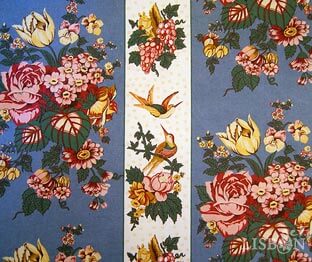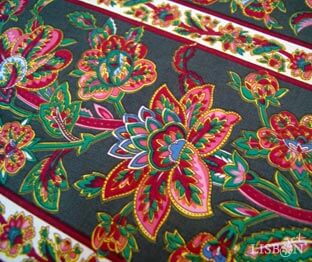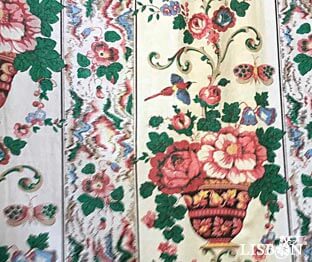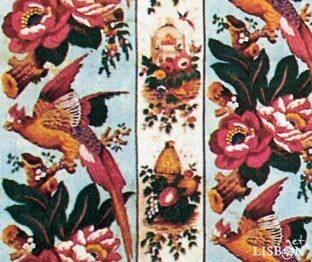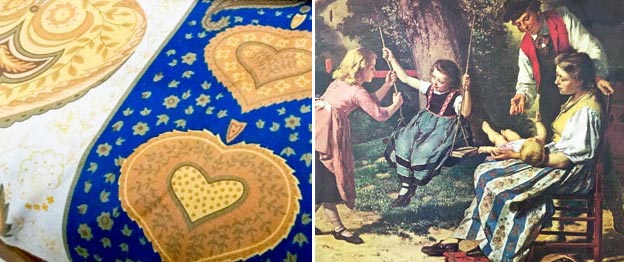Today’s post will be about the origin of the names of Chintz of Alcobaça – Collection Elipas: both its designations and brand created by engineer Elísio Sopas. Read until the end for many other curiosities!
In our article Chintz of Alcobaça, a Cultural Heritage at Risk we talked about the story of the Portuguese chintz and we’ve revealed that although its name indicates that it is from Alcobaça, its production was, in fact, initiated in the 18th century in the regions of Lisbon and Porto.
This article follows one other article about chintz of Alcobaça in the 20th century, where we introduced you Elísio Sopas, the pioneer of the recovery of the patterns Alcobaça, by daring to restart producing old patterns of the 1950s, as well as his son, engineer Elísio Sopas that, in the 1980s took this heritage one step ahead by taking the chance with entrepreneurism and passion.
We underline that today’s post complements the article The Unique Story of Chintz of Alcobaça in the 20th Century, which we recommend you read first.
Without further due, let’s find out the origin of the names of Chintz of Alcobaça – Collection Elipas chosen by engineer Elísio Sopas.
The Origin of the Names of Chintz of Alcobaça by Engineer Elísio Sopas
In 1983, Engineer Elísio Sopas inherited his father’s textile sale business in Porto after his death.
He started by recovering the chintz of Alcobaça pattern that was very successful in the 1950’s and that was reintroduced in the market by Elísio Sopas (father) when its production was basically nonexistent.
He created an exclusive collection of chintz of Alcobaça, calling it Collection Elipas, which merges the three first letters of Elísio and the last letters of the surname Sopas, to honour his father.
In addition to that, he named every pattern that he brought back to life. Each one of them has a short and curious story behind it…
Unmissable Curious Facts
Chintz of Alcobaça’s Colours

One of the characteristics of almost all patterns of chintz of Alcobaça, is that the background colour is the only one that changes, while the colours of the designs stay the same. For instance, the pattern Alcobaça has six variations of colours: yellow, beige, maroon, blue, pink and green.
And the pattern D. Leonor, that unfortunately isn’t produced anymore, even had eight different colour variations.


The Curious Reason Behind the Removal of Birds

The first chintz of Alcobaça recovered by Elísio Sopas (father) in the 1950s was a hit.
At the time, the Armazém dos Linhos had a lot of clients in Lisbon – fabric shops that for the most part no longer exist. These clients brought something to notice.
According to superstition, feathers brought misfortune. For this reason, Elísio Sopas (father) decided to remove them from the design.
As this popular belief waned, the birds featured in the new designs were kept. This was the case of the patterns Lormois, Campina and Colibri.
Today, we can find birds in the pattern Alcobaça.
The Woodblock Printed Fabric “Pombalino”

In the 1950s, in addition to the design 1 and 2 of chintz of Alcobaça, the Armazém dos Linhos sold other woodblock printed fabrics that weren’t related to the chintz patterns. The pattern Pombalino, named by Elísio Sopas (father), was part of that collection.
Today, Pombaline is many times mistakenly believed to be chintz of Alcobaça.
Collection Portuguese Villages
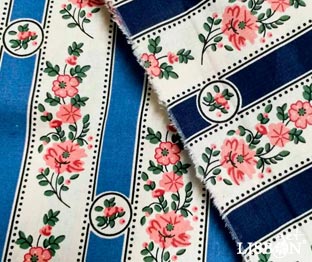
Pattern Belmonte
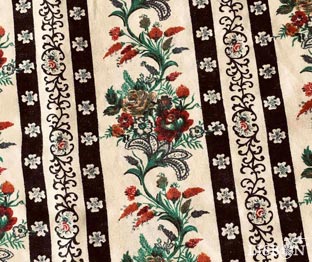
Pattern Monsanto
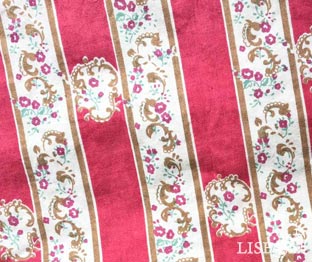
Pattern Monsaraz
Engineer Elísio was very successful in the reintroduction of chintz of Alcobaça in the market, but at a certain point there was a need to create other patterns in order to stimulate demand. Thus, the collection that included the patterns Belmonte, Monsanto and Monsaraz – portuguese villages – was born.
This line features old designs but that aren’t patterns of chintz of Alcobaça. Just like Pombalino, they’re also many times mistaken for chintz of Alcobaça.
False Alcobaça

It’s a pattern called Laços (bow). It was a design that engineer Elísio Sopas found among some sketches that his father had probably ordered from someone. Because he liked it, he adapted it to the style of the pattern Alcobaça. But it isn’t Alcobaça…
| Never miss another article | Subscribe here |
Viana, an Excellent Pattern for Christmas

Every year around Christmas time clients would look for new patterns suitable for this time of the year in the engineer’s warehouse. However, there was a year in which none of the suppliers’ proposals were to his liking. This led him to having the brilliant idea of ordering made tablecloths with the red version of the pattern Viana. Given the excellent result, this could’ve only have been a success.
This was a beautiful combination of creativity with the versatility of chintz of Alcobaça!
Now that we’ve reached the end of this article, we can only say that it was a great privilege to getLISBON to have the opportunity of revealing to its readers the origin of chintz of Alcobaça’s names by engineer Elísio Sopas, to whom we are thankful for his amiability and time.
With one more fragment of the story of chintz of Alcobaça written, we hope to contribute to both the appreciation and revitalisation of this unique product that reflects the Portuguese culture and heritage.
The project getLISBON has been very rewarding and we want to continue revealing the singularities of fascinating Lisbon.
Help us keep this project alive!
By using these links to make your reservations you’ll be supporting us. With no extra costs!
• Looking for a different experience? We can create a customised itinerary based on your interests. Contact us!
• Or if you prefer tours and other activities in various destinations, take a look at GetYourGuide.
• Save time and money with a flexible Lisbon Card!

